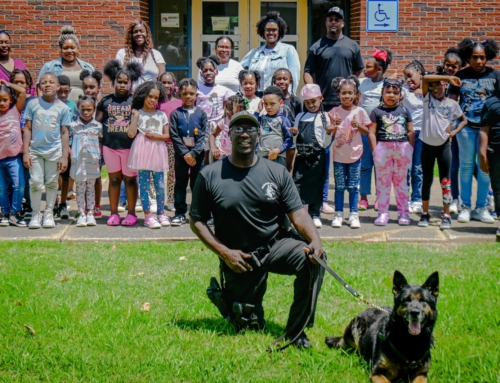Last time we covered the importance of recovery, sleep, and nutrition as well as how this can be incorporated into your training to aid in prevention of injuries during affecting an arrest and improvement of performance in training. I would be remised if I closed out this series and did not talk about training Brazilian Jiu Jitsu (BJJ) and the impact this has on both injures in law enforcement and on mental health in first responders and military personnel.
As a physical therapist, biomechanist (doctorate in human movement) and someone that has been training BJJ for 11 years (BJJ Black Belt), I have a little different perspective on BJJ training. As a sports physical therapist, injury prevention specialist, BJJ practitioner and combat athlete sports therapist, I see the impact on a lot of different levels and how this can impact multiple pain points for departments. Most approach BJJ training in law enforcement as a defensive tactics approach which often comes with some hesitation and push back. Part of that, I feel is from a misconception of what the art is. Although BJJ training is a great defensive tactic tool for law enforcement officers, there is so much more to it than that. There is also a huge impact that training BJJ can have on officer fitness, officer flexibility, officer mental health, officer confidence, musculoskeletal injuries in law enforcement officers and suspects, and reduced use of force on shift in those that are BJJ trained. If there is one single program that a department could implement to impact department musculoskeletal injuries and fitness, it would be “Officer Specific BJJ” training.
To highlight this, I would like to talk about a famous study that was done in 2019-2020 with the Marietta Police Department. Before we talk about the study, we should address some common misconceptions about BJJ training. First, this is not mixed martial arts or MMA. In traditional BJJ training, there is no striking. So, you’re not punching opponents in the face. BJJ is considered a grappling sport, much like wrestling, where you take down an opponent and control or submit that opponent. A common fear is that you are learning to choke opponents. However, law enforcement defensive tactics training with BJJ does not need to include suspect chokes. There are 1,000s of ways to control and submit an opponent without choking. However, you need to know how to defend against chokes, but you do not need chokes to control an opponent. As a biomechanist, I have appreciated how the sport teaches you to manipulate an opponent’s center of mass and body so that you can easily control and move them. How you leverage biomechanics to maximize joint manipulation and submission. It is truly one of the hardest arts to master (avg. years to black belt is 10-12 years), but also one of the most effective.

The Marietta Police Department study (in 2020) highlighted how this can help departments reduce risk of injury. This study had 95 of the 145 sworn officers in the department train BJJ for greater than one year (so still a white belt or beginner). The results of the study were pretty amazing and showed:
- Of the officers who trained BJJ for one year, only one injury was reported as a result of training.
- Officers trained in BJJ used the Taser 23% less than untrained officers in use of force (UOF) instances.
- Officers who trained and were involved in UOF instances had 48% less injuries than those who did not train BJJ. In one year, this saved the department $66,752 in workers comp claims.
- Suspects who had an encounter with a BJJ trained officer had 53% less injuries than those who encountered non-trained officers during UOF.
- Nightshift UOF was reduced from 44% of encounters to 18% when nightshift officers were trained in BJJ.
This is pretty remarkable results considering that this is only one year of training. For BJJ, it takes 10-12 years to get a black belt so at one year of training, most are still considered a white belt. So, even that low level of training resulted in significant impact on injury rates to officers, suspects, and impacted the percentage of use of force. Imagine what the results would be if that was implemented for several years. It could completely change the number of department injuries, number of legal actions, and EMOD rates for workers comp. In addition to the results with the Marietta study, there are also several studies looking at the impact on disabled Veterans who suffer from PTSD. Although in the preliminary stages, these studies are showing significant results and impacts on sense of well-being, suicidal ideation, depression, and overall health.
In my mind, if there is one program that addresses overall health and wellness, mental health, and officer safety, Brazilian Jiu Jitsu should be a consideration. When officers are consistently trained for the #1 mechanism of injury and for scenarios, they will most likely encounter with hands on, then injuries go down, use of force is decreased, officer safety is improved and community interactions are positively impacted.
Most reputable BJJ gyms offer discounts to first responders. If you are looking for a department-wide program, Officer Specific BJJ training (not your traditional BJJ training) should be strongly considered. If you would like more information on BJJ, Officer Specific BJJ training, the Marietta Study or other studies related to BJJ, feel free to contact me at tnessler@readyrebound.com.
Trent Nessler brings a wealth of physical therapy and academic research to his role as President of Ready Rebound Vitality.
Trent is the founder and developer of the ViPerform AMI™ & ViMove+ AMI™, ACL Play It Safe and Run Safe. He holds a bachelor’s degree in exercise physiology, a master’s in physical therapy, and a doctorate with a focus in biomechanics and motor learning.
Dr. Nessler has been a sports medicine physical therapist for 25+ years and is co-developer of a 3D movement assessment that is used by more than 450 pro teams, colleges and organizations and which has been used to assess over 40,000 athletes in the U.S.
A published researcher, and an author of How to Build a Badass Firefighter, Trent speaks internationally on the topic of ACL (anterior cruciate ligament) and injury prevention and serves as a consultant for professional teams and organizations.

As a sports physical therapist, avid weight lifter for more than 40 years and competitive Brazilian Jiu Jitsu brown belt, Dr. Nessler is always looking for ways to apply the latest science to optimize outcomes and enhance athletic performance.
To Find Out More, Visit https://readyrebound.com/







Get Social